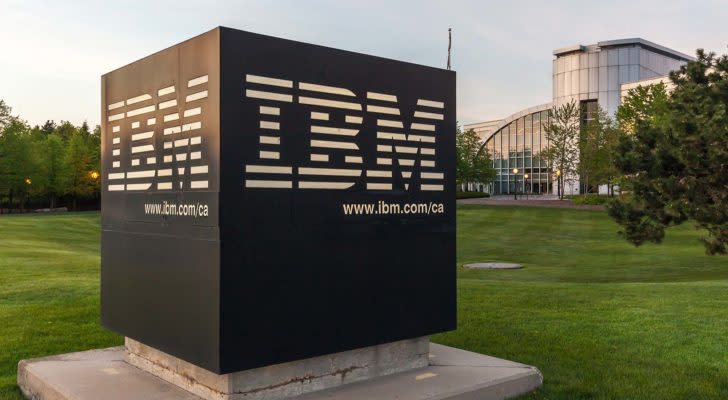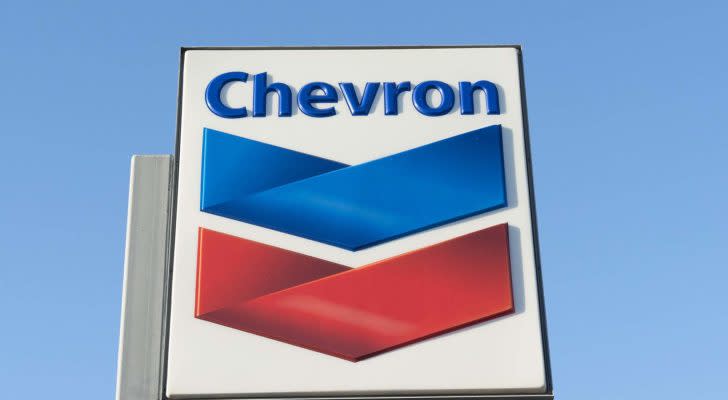The 7 Best Dividend Stocks for Passive Income
The stock market volatility persists as inflation, rising interest rates and falling earnings continue to weigh on market sentiment. Adding to the uncertainty, recent midterm elections failed to deliver a clear mandate for either party. Investors are rightfully nervous about how the market will look going into 2023. Those looking to sleep well at night regardless of the latest political and economic developments should consider investing in dividend stocks for passive income.
In a downturn, you might reasonably question how safe a company’s payout is given the worsening economic outlook. However, all seven of the names below are Dividend Aristocrats, meaning they have raised their payouts annually for at least 25 consecutive years — a period covering the dot-com bust and the Great Recession. In other words, these companies have proven they can prosper in difficult times and not just maintain, but increase their dividend. So, there’s a good chance they can weather the current turmoil as well.
The names on today’s list of the best dividend stocks for passive income all have a yield of at least 3%, offering a strong starting point in addition to any future dividend increases.
InvestorPlace - Stock Market News, Stock Advice & Trading Tips
Exxon Mobil | $110.50 | |
International Business Machines | $141.23 | |
V.F. Corporation | $29.93 | |
Chevron | $181.30 | |
Clorox | $143.98 | |
Kimberly-Clark | $127.78 | |
Realty Income | $65.37 |
Dividend Stocks for Passive Income: Exxon Mobil (XOM)

Source: Jonathan Weiss / Shutterstock.com
Shares of Exxon Mobil (NYSE:XOM) sold off in the wake of the midterm election results. Investors hoping for a so-called red wave were disappointed as Republicans failed to notch some expected wins. This, in turn, may bring a tougher regulatory environment for oil and gas companies for at least the next two years.
Investors shouldn’t be too worried, though. For one, Exxon Mobil has always operated on a generational time frame. The company is known for investing on a decades-long timescale and consistently puts capital to work when others are shying away. This contrarian streak showed itself, for example, when Exxon Mobil kept investing in its huge offshore Guyana field even as rivals slashed new oil and gas production spending. Once the price of oil surged again in 2021, the successful Guyana bet put Exxon Mobil in the driver’s seat among major international oil producers.
All that to say that short-term regulatory developments during one congressional term aren’t enough to meaningfully slow Exxon Mobil down. Additionally, more regulation could lead to less output, and, in turn, higher prices. Further government efforts to restrict new oil and gas production could, counterintuitively, make Exxon Mobil’s existing production capacity even more valuable.
In any case, XOM stock is a steal here trading at 9.3 times earnings with a current dividend yield of 3.3%.
IBM (IBM)

Source: JHVEPhoto / Shutterstock.com
After a decade of watching mega-cap technology stocks soar, it would have seemed crazy to think about buying IBM (NYSE:IBM). After all, the staid technology company seemed to have missed major technological trends and was struggling to maintain even flat revenue while the rest of the tech sector soared. With 2022’s turn of events, however, IBM’s appeal has returned.
Simply put, IBM stock is so cheap that it doesn’t rely on future growth or high expectations. The company’s primary lines of business in providing tech consulting, information technology services and the like are not fast-moving, but they are consistent. IBM has established deep, persistent relationships, in many cases spanning decades, with leading Fortune 500 companies. These don’t go away overnight.
IBM is far from dynamic at this point, but simply keeping the ship steady is enough with shares yielding 4.8%. Meanwhile, don’t discount future growth. The Red Hat acquisition greatly broadened IBM’s push into the hybrid cloud. Indeed, IBM’s cloud computing offering, while trailing the big three, has gained some traction with major customers in recent quarters.
IBM has its issues, but those are fully reflected in its bargain valuation.
Dividend Stocks for Passive Income: V.F. Corporation (VFC)

Source: rblfmr / Shutterstock.com
V.F. Corporation (NYSE:VFC) is a large apparel company that owns more than a dozen different brands and trademarks, including Vans, The North Face, Dickies, Timberland and JanSport. V.F. covers a wide variety of demographics but is particularly focused on leisure and outdoor apparel.
Investors may rightly shy away from apparel stocks given that this tends to be a cutthroat industry with thin profit margins subject to fickle consumer tastes. However, V.F.’s unique approach reduces this risk. The company’s large stable of different brands helps ensure that there is something that is always on-trend and gaining appeal with consumers at any given time. Right now, for example, while Vans is in a slump, The North Face products are selling well.
VFC stock has lost 70% of its value since hitting its all-time high above $100 in early 2020. Profits have dipped a bit in 2022 as consumer spending has started to roll over and inventory levels have mounted. Regardless, the market has overreacted. V.F. Corporation has been through recessions before and can make it through this one as well.
With its most recent dividend hike in October, V.F. Corporation left the Dividend Aristocrats and became a Dividend King — a company that has increased its annual payout for 5o or more consecutive years. VFC stock currently yields 7.6%.
Chevron (CVX)

Source: tishomir / Shutterstock.com
Chevron (NYSE:CVX) finds itself in a similar situation to Exxon Mobil, with some investors selling off shares thanks to the recent election results. However, long-term investors can profit from the political jitters. The truth is that profits for the major oil and gas producers with a global operations footprint simply aren’t that impacted by minor regulatory changes in the United States, at least not in the short run.
Meanwhile, the world needs more energy. With Russia’s invasion of Ukraine, a good deal of oil and natural gas supplies have gone off the market. This makes it much harder for continental Europe to power itself. Demand for liquified natural gas, or LNG, has soared to help ensure that the lights stay on and people stay warm during the harsh European winter.
CVX stock is trading near its all-time high, which might make investors think they’ve missed the opportunity. Yet, shares still trade for less than 11.5 times forward earnings and offer a 3.2% dividend yield. And earnings should continue to grow thanks to strong energy demand along with the company’s share buyback program, which increases the amount of earnings per remaining outstanding share.
Dividend Stocks for Passive Income: Clorox (CLX)

Source: TY Lim / Shutterstock.com
Clorox (NYSE:CLX) surprised a lot of investors over the past few years. Typically, people think of consumer staples stocks as being among the most consistent and least volatile. Yet, between November 2019 and August 2020, CLX stock soared as much as 66% as people rushed to stock up on cleaning supplies amid the early months of the pandemic.
But it soon became clear people had way more bleach and other products than they could use in any reasonable time frame. This led to a slump in Clorox’s product sales as people simply haven’t needed to keep buying as many cleaning goods lately. Throw in inflation and supply chain issues and Clorox has gone from boom to bust in record time. Today, shares are once again trading at pre-pandemic levels.
However, this downturn won’t last forever. Ultimately, sales of bleach and its other products will return to normal pre-pandemic levels and Clorox will get its profit margins back to typical levels. Meanwhile, supply chain disruptions and inflationary pressures will cool off sooner or later. And Clorox has been pushing through price hikes that will raise revenue considerably going forward.
All told, investors can pick up this classic defensive blue-chip company at a discounted price thanks to the temporary earnings shortfall. And they can take comfort in the stock’s 3.4% yield while they wait.
Kimberly-Clark (KMB)

Source: Trong Nguyen / Shutterstock.com
Kimberly-Clark (NYSE:KMB) is a fellow consumer staples company that has faced a similar trajectory to Clorox. Kimberly-Clark’s outlook soared in 2020 as people raced to pick up additional toilet paper and bathroom supplies at the start of the pandemic. However, as the rate at which people use toilet paper, soap and other such essentials didn’t actually change much, this sales lift quickly disappeared. Throw in a major inflationary wave, and Kimberly-Clark’s earnings have come up short of expectations.
But the company should have a swift road to recovery. When the cost of key inputs, such as wood pulp, stabilizes, it will put the company on better near-term footing. In the meantime, management continues to raise prices to offset the effect of higher costs.
Analysts forecast the company’s earnings will decline 9% in 2022 to $5.62 per share, but the decline should be short-lived. As demand normalizes, earnings should come back quickly. Analysts predict a 12.6% earnings jump to $6.33 per share next year, which would result in a forward P/E ratio of 20.2 for this quality blue chip source of passive income. KMB stock currently yields 3.7%.
Dividend Stocks for Passive Income: Realty Income (O)

Source: Shutterstock
Realty Income (NYSE:O) has a compelling message for dividend stock investors: It labeled itself “The Monthly Dividend Company.” Realty has paid a monthly dividend since 1994 and is known for raising that payout amount several times each year.
How does Realty Income manage to provide investors with a strong, consistent yield? It is a real estate investment trust and one specifically in the triple net lease category. These tend to be lower risk for landlords since the tenants are responsible for major expenses such as utilities.
Like most other areas of the market, REITs have come under significant pressure in 2022. This is because they are tied to interest rates. Investors tend to demand a higher dividend yield from their REITs when the interest rates on comparable fixed-income alternatives such as government Treasury bonds increase. However, this is not a reflection of the quality of Realty Income’s business and has more to do with broader market conditions.
In any case, Realty Income has increased its dividend for more than 25 years in a row, and it has good odds of making it through the current downturn without any major disruption in the business plan. Shares currently yield 4.7%.
On the date of publication, Ian Bezek held a long position in IBM, VFC, and XOM stock. The opinions expressed in this article are those of the writer, subject to the InvestorPlace.com Publishing Guidelines.
Ian Bezek has written more than 1,000 articles for InvestorPlace.com and Seeking Alpha. He also worked as a Junior Analyst for Kerrisdale Capital, a $300 million New York City-based hedge fund. You can reach him on Twitter at @irbezek.
More From InvestorPlace
Early Bitcoin Millionaire Reveals His Next Big Crypto Trade “On Air”
It doesn’t matter if you have $500 or $5 million. Do this now.
The post The 7 Best Dividend Stocks for Passive Income appeared first on InvestorPlace.
